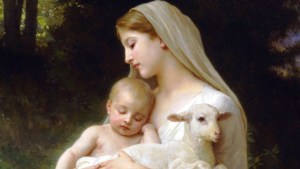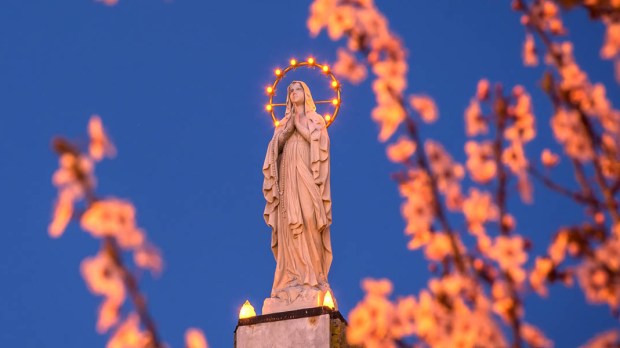Lenten Campaign 2025
This content is free of charge, as are all our articles.
Support us with a donation that is tax-deductible and enable us to continue to reach millions of readers.
Pope Francis is about to open the month of May with a visit to the Shrine of Our Lady of Divine Love. He is following the footsteps of his two recent predecessors in reminding us that this particular shrine holds a special place in Rome’s heart. Pope John Paul II visited the shrine on May 1, 1979, and Pope Benedict XVI did the same 27 years later, on May 1, 2006.
The sanctuary of Our Lady of Divine Love is a little off the beaten path, but well worth a stop whenever you find yourself in the Eternal City. If you want to have the full experience of a pilgrimage to Our Lady of Divine Love, which entails walking about nine miles, give yourself a full day, or join one of the many all-night vigil pilgrim walks to the shrine that happen throughout the year.
Pilgrims often start out at the Piazza di Porta Capena, a southern gateway to Rome, and walk along the Via Appia Antigua (Old Appian Way) until reaching the Quo Vadis Church. This small place of worship marks the site where St. Peter, fleeing from Roman persecution, allegedly met the Lord and asked him, “Lord, where are you going?” Jesus answered, “I am going to Rome to be crucified again.” Upon hearing this response, Peter turned around and returned to Rome, where he himself was then martyred by being crucified upside down. After seeing the Quo Vadis site, you would walk a few more miles along the Via Ardeantina to reach the Shrine of Sancte Marie de Divino Amore, or Our Lady of Divine Love.
As Pope Benedict wrote in Deus Caritas Est, and reiterated in his 2006 address at Our Lady of Divine Love, “Mary is a woman who loves.” These simple six words — a profound description of Mary — perfectly captures the focus and significance of the Shrine of Our Lady of Divine Love. People come before her in pilgrimage over and over, and each time, they are reminded that they are loved.
The center of devotion at the shrine is a fresco that was originally painted on a tower in the early 1300s. For a few centuries, aside from some local shepherds who would gather near the tower to say their Rosary, few people knew of the image. That would change in 1740, when a traveler passing by the tower on his way to the Vatican was attacked by a pack of dogs. Looking up and seeing the image of Mary, he called on her protection and was miraculously saved. Word of this spread, and devotion to the image grew rapidly.
In 1745, a small church was built at the site of the original tower and the painting, which had been removed from the tower and temporarily housed in a local church, was moved back to its original location, now a shrine.

Read more:
When Mary is the problem
Roman affection and devotion for Our Lady of Divine love was further strengthened in World War II, when the Holy Father placed Rome under the protection of Our Lady of Divine Love. The image had been brought within the city walls and was temporarily housed in the Church of St. Ignatius. Following the liberation of Rome, in June 1944, Pius XII visited the image, attributed the city’s freedom to her intercession, and called her the Savior of Rome. Shortly after the war ended, the fresco was moved back to the shrine.
A new sanctuary, able to accommodate about 1,500 pilgrims, was completed in 1999. Visitors are now able to see both the original shrine and the new sanctuary. Care of the shrine has been entrusted to the Handmaids of Merciful Love and Sons of Merciful Love. The priests and sisters both look after the shrine and minister to the many pilgrims who visit the site.
Our Lady of Divine Love is distinct from St. Mary Major’s, which is the largest Marian church in Rome and one of the only four churches bearing the title Major Basilica. St. Mary Major and Our Lady of Divine Love are the two most well visited shrines in the region of Rome, and both numbered among the seven pilgrim churches where a plenary indulgence could be obtained during the Holy Year in 2000.
Mary, Mother of Divine Love, pray for us!

Read more:
Better than consecrating your kids to Mary is helping them to do it themselves. Here’s a tool for that

